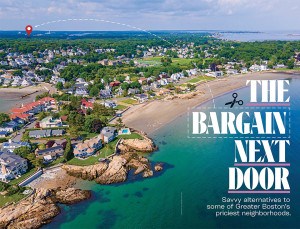Reverse the Curse: Boston Breakers and Women’s Soccer Make a Comeback
 From left, Rhian Wilkinson, Heather Mitts, Heather O’Reilly, Cat Whitehill, and Sydney Leroux, of the recently resurrected women’s pro soccer team the Boston Breakers. Photos by Brad Smith (Heather Mitts); J. Brett Whitesell (Cat Whitehill); Bill Barrett (Heather O’Reilly); John Todd (Sydney Leroux); Howard C. Smith (Rhian Wilkinson), courtesy of isiphoto.com.
From left, Rhian Wilkinson, Heather Mitts, Heather O’Reilly, Cat Whitehill, and Sydney Leroux, of the recently resurrected women’s pro soccer team the Boston Breakers. Photos by Brad Smith (Heather Mitts); J. Brett Whitesell (Cat Whitehill); Bill Barrett (Heather O’Reilly); John Todd (Sydney Leroux); Howard C. Smith (Rhian Wilkinson), courtesy of isiphoto.com.
Record-setting numbers of people watched the U.S. women’s soccer team win an Olympic gold medal and a World Cup silver trophy over the past couple of years, and this spring, three of the team’s players—Heather Mitts, Sydney Leroux, and Heather O’Reilly—are coming to town to play for the Boston Breakers.
Founded in 2000, the Breakers are the oldest women’s pro soccer team in the country—if you’re willing to overlook the fact that the troubled women’s soccer league they’ve played in has folded twice during that time. Financial mismanagement caused the league’s first incarnation to fail in 2003 (it lost $100 million in three years), and when new owners tried to revive it with a grassroots approach four years ago, investors simply couldn’t keep up with the teams’ expenses (a legal battle didn’t help). The league was forced to shut down after three seasons.
With continued world dominance now at stake, though, U.S. Soccer, the sport’s national governing body, has decided to put its own resources into reviving the league. U.S. Soccer will pay the salaries of all 23 national-team players, who’ve been allocated evenly among the league’s teams—a move that should provide the organization with considerable financial security. (Canada and Mexico will also each have 16 of their own national players in the new league, and will pay their salaries.)
Even with this kind of support, the teams are still going to need fans—a lot of them. That shouldn’t be a problem in Boston, where the Breakers have always been extremely popular. At Harvard Stadium, where the professional team played last, an average of 4,500 people attended the games. This spring they’ll compete at Somerville’s 3,500-seat Dilboy Stadium, and the team’s management is hoping for a sellout season. So far, so good: By February, they’d already sold 65 percent of season-ticket memberships.
All of the signs are pointing to a successful relaunch of the league this time around—and for a successful Breakers season. Women’s soccer is surging in popularity worldwide, and Team U.S.A.’s recent victories have attracted more attention than ever to the game here at home. Massachusetts itself now runs one of the biggest youth-soccer programs in the country, with more than 200,000 kids involved. That’s particularly encouraging, because kids, it turns out, are the core audience for women’s soccer. Expect to see lots of them in the crowd at Dilboy Stadium on April 14, when the Breakers kick off the season.


